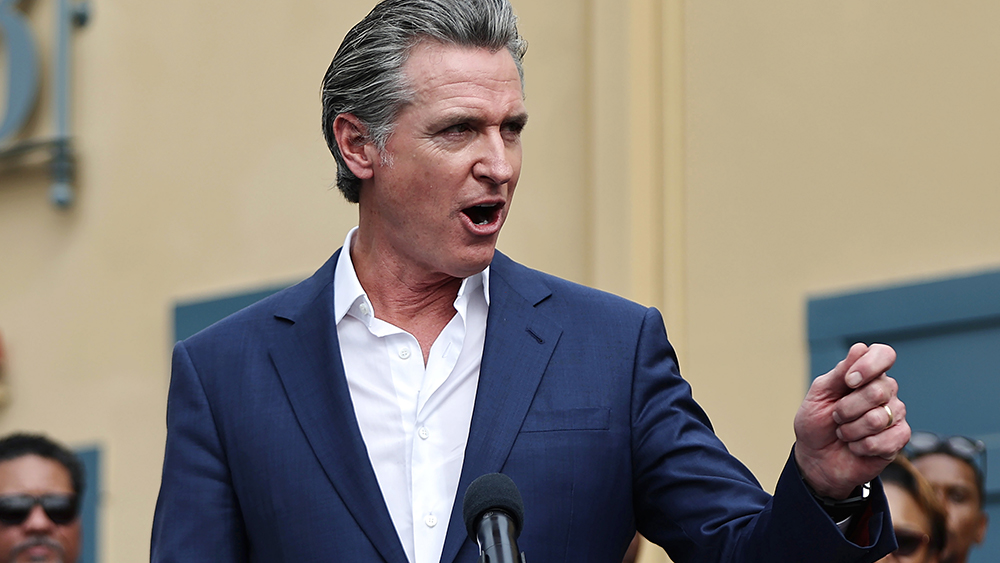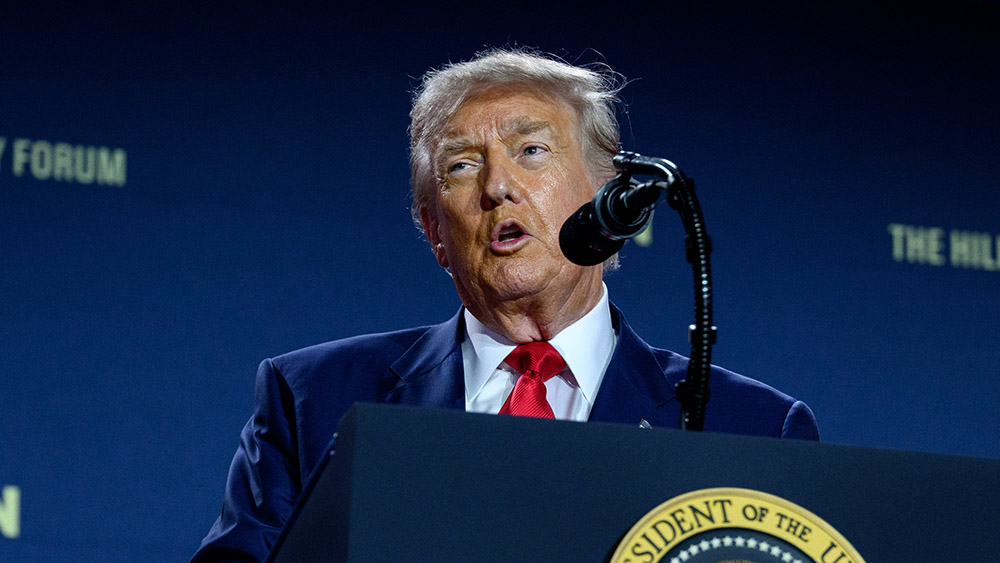Bureau of Labor has been deceiving the public with phony jobs data for years
By ljdevon // 2025-08-12
Tweet
Share
Copy

After years of Democrats and Republicans arguing over job numbers, one thing remains certain: the government’s job numbers are far from the truth, Governments do NOT create jobs in the first place. Government bureaucracy gets in the way of a free enterprise system. Governments only create jobs for their bureaucratic benefit, but can only get in the way of a free enterprise system, picking its favorites through subsidies, and hurting honest job growth overall.
It’s time to shine a light on a system that has been deliberately manipulating the numbers for decades, not just to bolster political agendas, but to fuel a welfare-warfare state that thrives on deception. The firing of Dr. Erika McEntarfer, head of the Bureau of Labor Statistics, by President Trump, has only scratched the surface of this decades-long charade. The BLS, long criticized for its questionable methods, continues to serve as a puppet for systemic corruption, ensuring that the true state of the economy remains hidden. It’s time to pull back the curtain and reveal the naked truth behind the veil of statistics. As President Trump has accused, these numbers are not just misleading—they're outright fabricated, and it’s up to us to advocate for real transparency.
Key points:
- President Trump fired Dr. Erika McEntarfer, head of the Bureau of Labor Statistics, for allegedly manipulating jobs data.
- The BLS has long used deceptive methods to underreport unemployment and inflation.
- Including "discouraged" workers and those working part-time solely due to lack of full-time opportunities would raise the unemployment rate by almost 20 percent.
- The government uses "chained CPI" to underestimate the true inflation rates, leading to misleading economic figures.
- President Trump is partially correct in his accusations, but the problem predates his administration.
- By exposing these manipulations, Trump serves a greater truth about government deceit.
Behind the veil: Decades of deceptive practices
For over two decades, the Bureau of Labor Statistics has quietly adjusted its methods to present a rosier picture of the US economy. One such maneuver, implemented starting in 1994, was the exclusion of "discouraged" workers—those who have given up on finding employment—from the official unemployment figures. According to John Williams, publisher of the website Shadow Stats, including these workers would bump up the unemployment rate by nearly 20 percent. This change alone paints a far grimmer economic picture than the one the government likes to present. Moreover, the BLS includes part-time workers in the employment figures even if they're underemployed and can't find full-time positions. This practice skews the data further, making it appear as though the job market is healthier than it truly is. The reality, however, can often be starkly different, with individuals struggling to make ends meet while working multiple part-time jobs or seeking government assistance. This deception is compounded by the government's understatement of inflation. By using "chained CPI," the BLS effectively reduces the perceived impact of rising prices by considering "substitute" goods as equivalent. For instance, if steak prices soar out of reach, the government might argue that hamburger is a suitable substitute, even if consumers didn't previously consider them equivalent. This method allows the government to continue providing nominal increases in benefits without acknowledging the true cost of living increases, thereby deflating the value of those benefits for veterans, Social Security recipients, and other welfare recipients.A systematic gaslighting of the public
The government’s manipulation of unemployment and inflation data isn't just an exercise in statistical gymnastics—it's a calculated effort to gaslight the American public into believing that all is well. This deception ensures that any signs of economic weakness, such as rising prices or growing unemployment in local areas, are dismissed as isolated incidents. It’s a narrative that keeps the welfare-warfare state humming along, with politicians able to maintain their mandate and the public none the wiser. But why go to such lengths? One primary reason is to reduce the financial burden on the government. By understating the real inflation rate, the US Treasury can avoid higher "cost-of-living" adjustments for various entitlement programs. This allows the government to cut spending without dealing with the political fallout that comes with austerity measures or difficult votes in Congress. It’s a sleight of hand that benefits those in power while leaving everyday citizens taking the toll. President Trump’s outspokenness regarding these manipulations has exposed a truth that many have long suspected but have been reluctant to acknowledge. The BLS has been playing this game for decades, and it’s time for a real reckoning. The accuracy of the government’s statistics is as important as it ever has been, and any attempt to discredit those who expose the truth is a desperate attempt to maintain the status quo. President Trump has done a service by exposing the manipulations within the Bureau of Labor Statistics. While critics charge that his actions endanger the "credibility" of government figures, it's vital to remember that this credibility was always built on sand. The real issue is not the breaking of trust but the realization that such trust was never truly warranted. Sources include: RonPaulInstitute.org NBCNews.com Enoch, Brighteon.aiTweet
Share
Copy
Tagged Under:
economy unemployment Bureau of Labor Statistics conspiracy big government deception economic policies inflation pensions political agendas elected officials government deception cost-of-living adjustments public deception jobs data economic indicators John Williams Shadow Stats misleading statistics government manipulation economic transparency welfare-warfare statistical accuracy Bureau of Labor chained CPI
You Might Also Like
Trump’s bold bid to overhaul voting system sparks legal debate amid 2026 countdown
By Willow Tohi // Share
Mainstream media outlet MSNBC rebrands as MS NOW — critics slam network’s desperate pivot
By Ramon Tomey // Share
California Gov. Newsom now begging oil giants not to leave the Golden State
By Ramon Tomey // Share
AI & economic liberty: Will decentralized tech save human autonomy?
By Finn Heartley // Share
Recent News
Trump announces $1,776 "Warrior Dividend" for military ahead of holiday season
By bellecarter // Share
U.S. approves $11 billion arms package for Taiwan, escalating tensions with China
By bellecarter // Share
Fired educators vow to fight on after Supreme Court rejects vaccine mandate case
By isabelle // Share











